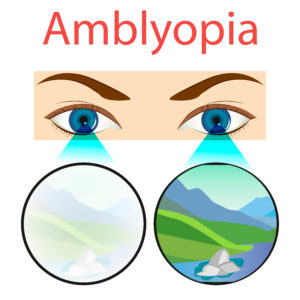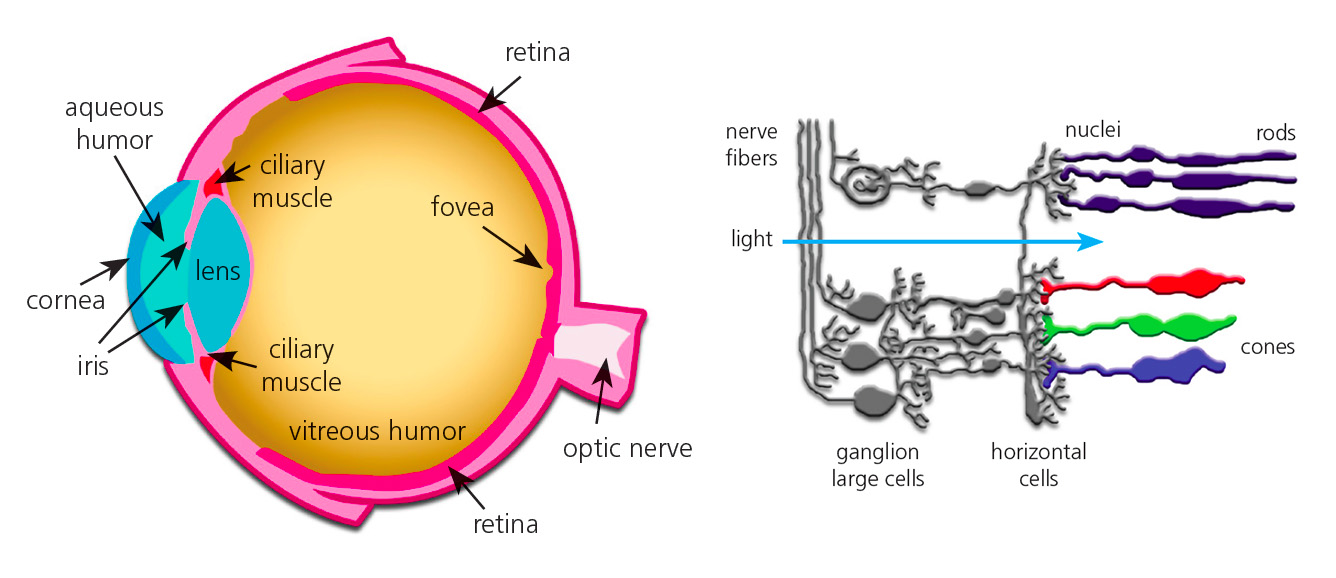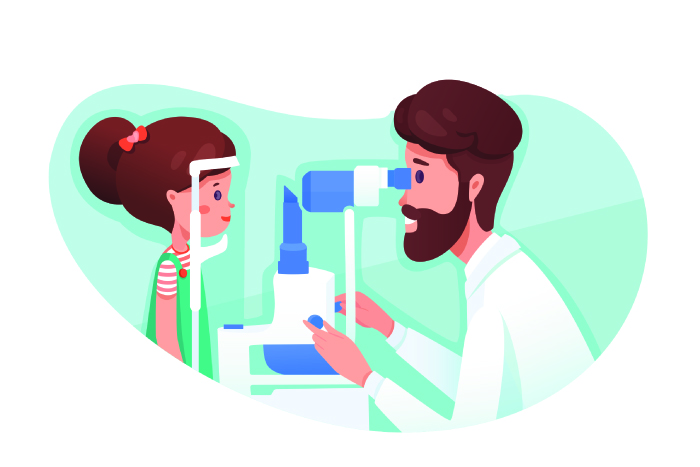Amblyopia, commonly referred to as “lazy eye,” is a vision disorder that occurs during the early stages of life. It happens when the brain and the eye do not work together properly, leading to reduced or blurry vision in one eye. This condition typically develops when one eye has better focus and alignment than the other, causing the brain to rely more on the stronger eye for visual input and neglecting the weaker eye. If left untreated, amblyopia can lead to permanent vision impairment.
The most common causes of amblyopia include:
1. Strabismus: Misalignment of the eyes, where one eye may turn inwards, outwards, upwards, or downwards.
2. Refractive Errors: Significant differences in the prescription (nearsightedness, farsightedness, or astigmatism) between the two eyes.
3. Blockage of Vision: Conditions like cataracts in one eye during early childhood can prevent proper visual development.
Treatment for amblyopia typically involves a combination of the following approaches:
1. Patching:This is a common treatment method where the stronger eye is covered with an adhesive patch for a certain period each day. By covering the stronger eye, the brain is encouraged to use the weaker eye more, thus promoting visual development.
2. Atropine Eye Drops:These drops are placed in the stronger eye to temporarily blur its vision. This forces the brain to rely on the weaker eye, promoting its development.
3. Glasses: If a significant refractive error is contributing to amblyopia, wearing glasses to correct the prescription imbalance can be part of the treatment plan.
4. Vision Therapy: In some cases, vision therapy exercises may be prescribed to help improve the eye-brain connection and coordination, especially when strabismus is involved.
5. Treating Underlying Conditions: If the amblyopia is caused by factors like cataracts or other structural issues, surgical intervention may be necessary to address the underlying problem.
The success of amblyopia treatment depends on the age of the child and how early the condition is detected and treated. Treatment is most effective during the critical period of visual development, which is typically up to around age 7. After this age, the brain’s ability to adapt diminishes, making treatment less effective.
Regular eye exams for children, especially during the early years of life, are crucial for detecting and treating amblyopia and other vision problems. If you suspect that your child might have amblyopia or any other vision issue.
It’s important to consult a pediatric ophthalmologist Dr. Sonia Maheshwari , Eye specialist in Vikhroli for a proper evaluation and guidance on the most appropriate treatment plan. she is practicing at Clear Sight Eye care and Laser Center.




